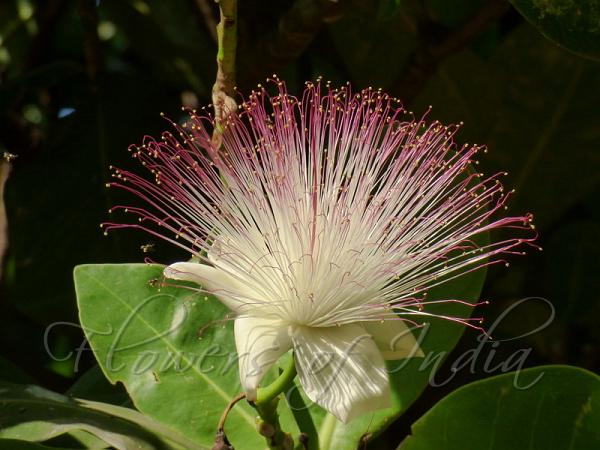|
| Sea Poison Tree |
|

|

| File size | 246440 |
| Original date | 1/7/18 9:06 AM |
| Resolution | 800 x 600 |
| Flash | Flash did not fire, auto |
| Focal length | 41.14mm |
| Exposure time | 1/500s |
| Aperture | 5.5 |
| Focus Distance | |
| Metering Mode | Multi-segment |
| Camera make | Panasonic |
| Camera model | DMC-FZ70 |
| Sensor type | OneChipColorArea |
|
|
|
Photo: |
Botanical name: Barringtonia asiatica Family: Lecythidaceae (Barringtonia family)
Synonyms: Barringtonia speciosa
Synonyms: Barringtonia speciosa
Sea Poison Tree is a small to medium-sized tree growing
to 7–25 m tall. It has large leaves held in rosettes at the ends of branches.
The leaves are narrow obovate, 20–40 cm long and 10–20 cm broad. The young
leaves are a beautiful bronze
with pinkish veins. Old leaves turn yellowish. The flowers are delightful puff
balls of white stamens tipped with pink. They open at night and attract large
moths and nectar-feeding bats with their heavy scent.
The next morning, the flower stamens are usually found strewn beneath the
tree. The fruits have a typical lantern shape and float on the water. The
fruit can survive drifting on the sea for long distances and for periods of up
to 2 years.
All parts of the tree contain, saponin, a poison. The seeds and other parts of
the plant are pounded, pulped or grated to release the poison and used to stun
fish in freshwater streams. The floating seeds are sometimes used as fishing
floats.
Medicinal uses: The heated leaves are used to treat stomach ache
and rheumatism (Philippines); seeds are used to get rid of intestinal worms.
The heated leaves are used to treat stomach ache
and rheumatism (Philippines); seeds are used to get rid of intestinal worms.
Medicinal uses:
 The heated leaves are used to treat stomach ache
and rheumatism (Philippines); seeds are used to get rid of intestinal worms.
The heated leaves are used to treat stomach ache
and rheumatism (Philippines); seeds are used to get rid of intestinal worms.
| Identification credit: Dinesh Valke | Photographed in Maharashtra. |
• Is this flower misidentified? If yes,